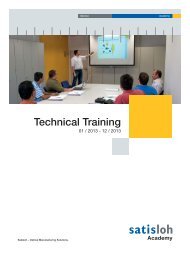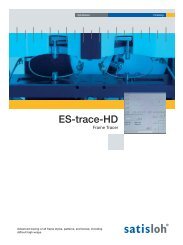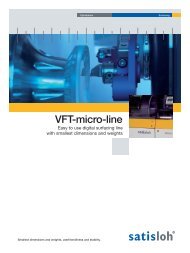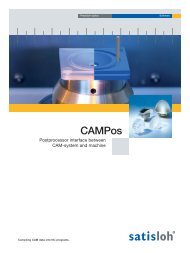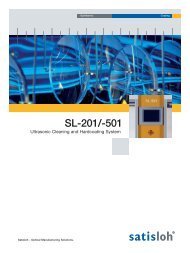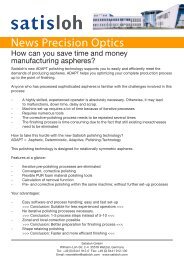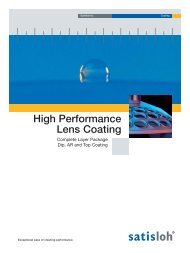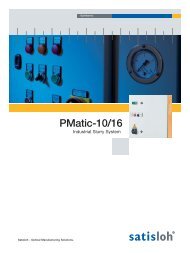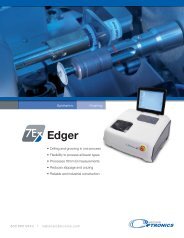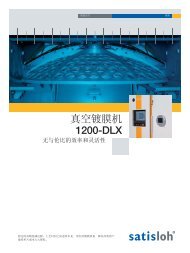Productivity (60-90 lenses/hr) - Satisloh
Productivity (60-90 lenses/hr) - Satisloh
Productivity (60-90 lenses/hr) - Satisloh
You also want an ePaper? Increase the reach of your titles
YUMPU automatically turns print PDFs into web optimized ePapers that Google loves.
The breakt<strong>hr</strong>ough<br />
that makes it all possible.<br />
Blank On-Block<br />
Surfaced On-Block<br />
Coated On-Block<br />
Edged On-Block<br />
Every OBM machine and process is proven <strong>Satisloh</strong> technology.<br />
What’s game-changing? The ability to integrate all processes using<br />
a single block – enabling totally automated in-line production.<br />
For this, two breakt<strong>hr</strong>oughs were needed:<br />
1. Nucleo Blocking - The patented Nucleo blocking process<br />
utilizes a machineable plastic block that can be used in every<br />
machine – including AR coating and edging. The process: dosing<br />
adhesive onto clear plastic block, lowering lens blank into the<br />
adhesive using patented spatial prism technology, followed<br />
by UV curing. The result: full support prismatic blocking that<br />
eliminates block rings, alloy, and its 40 minute cooling period. The<br />
Nucleo block is an open platform designed to work in any brand<br />
surfacing machine.<br />
2. Back Side Digital Surfacing – Prior to the development<br />
of digital surfacing and back-side PAL designs, the number of<br />
SKU’s (stock-keeping units) for front-side cast progressive blanks<br />
was vast. Each PAL design, add power, base curve, and lens<br />
material required a different semi-finished lens blank, and<br />
to carry all of the variations required a high investment. It was<br />
never financially practical to double or triple inventory investment<br />
by also carrying each blank with front-side treatments such<br />
as AR coatings. Instead, labs typically added lens treatments like<br />
AR coatings to both sides of <strong>lenses</strong> in house after surfacing.<br />
This step has now been eliminated. Digital back-side surfacing<br />
allows a lab to dramatically reduce its lens SKU’s from thousands<br />
to dozens. For the first time, it is financially attractive for labs<br />
to carry each lens blank in both hard-coated and front-side pre<br />
AR-coated SKU’s. Front-side treatments can always be added<br />
more efficiently at the off-shore factory where blanks are cast<br />
or molded. Now local labs can focus solely on processing<br />
the back sides of <strong>lenses</strong>. The results? A dramatic reduction<br />
of process steps and production time.



